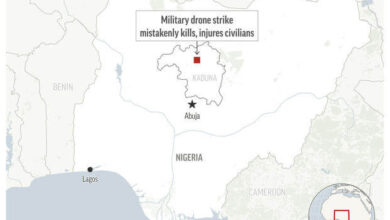Spending $11,500 Annually, AARP Reports

In a recent revelation, data from AARP and the National Alliance for Caregiving sheds light on the financial challenges faced by veteran and military caregivers, who spend an average of $11,500 annually from their personal income on caregiving-related expenses. This figure is 150% higher than the average spent by other family caregivers in the United States, indicating a significant and concerning disparity.
Subscribe to our weekly newsletter and stay up to date.
Financial Strain and Unpaid Labor
The report underscores that over 6.5 million veterans and military caregivers contribute a staggering $14 billion in unpaid labor each year, supporting their service members. This financial burden persists despite the Department of Veterans Affairs (VA) offering extensive services for caregivers. Advocates argue that more awareness is needed to ensure that these caregivers are informed not only about VA resources but also about nonprofit organizations working to alleviate their financial and emotional stress.
Financial Setbacks and Personal Sacrifices
According to AARP and the National Alliance for Caregiving, 43% of veteran and military caregivers have experienced at least one financial setback. These setbacks include taking on debt or using personal savings to cover expenses related to caregiving, such as transportation, respite care, geriatric services, and more.
A poignant example is shared by Amy Goyer, AARP’s caregiving expert, who discovered late in her caregiving journey that her father was eligible for veterans benefits. Goyer emphasizes that earlier knowledge of these benefits could have potentially prevented her from declaring bankruptcy. This highlights the critical importance of ensuring that veteran caregivers are aware of available resources.
Caregiving Challenges and Reasons for Higher Expenses
While the report does not delve into the specific reasons why veteran caregivers bear a significantly higher financial burden, Goyer suggests several factors. Veterans, often younger and requiring long-term care, may have more intensive care or mental health needs. Additionally, the inability to work may place a greater financial responsibility on the caregiver.
VA Caregiver Support Programs
The VA manages two key programs under its VA Caregiver Support Program: the Program of General Caregiver Support Services (PGCSS) and the Program of Comprehensive Assistance for Family Caregivers (PCAFC). PGCSS offers peer support, skills training, coaching, and referrals, while PCAFC provides eligible caregivers with stipends and support for caring for severely injured or disabled veterans.
Despite these resources, challenges have surfaced, including changes to eligibility requirements in the Family Caregiver Program. A proposed set of requirements, if implemented, could render up to 90% of enrolled veterans ineligible. An executive order from President Joe Biden has prompted a review of these changes, with no official announcement as of now.
Financial Planning and Awareness
To navigate the complex landscape of caregiving, Goyer recommends caregivers seek the services of a financial adviser to ensure financial stability while supporting their loved ones. Additionally, she stresses the importance of enrolling veterans in VA care to access essential services and benefits. Goyer and Shawn Moore, the financial wellness program manager for the Elizabeth Dole Foundation, will host a webinar on November 15, providing valuable insights and advice on securing finances as a caregiver, especially for veterans with long-term care needs.
As the caregiving landscape evolves, the need for comprehensive support for veteran caregivers becomes increasingly apparent. Awareness of available resources, financial planning, and continued advocacy are crucial to addressing the unique challenges faced by those caring for our nation’s heroes.





